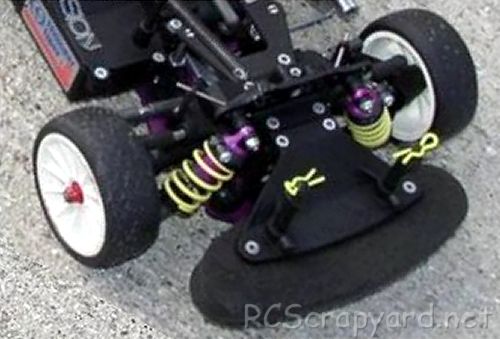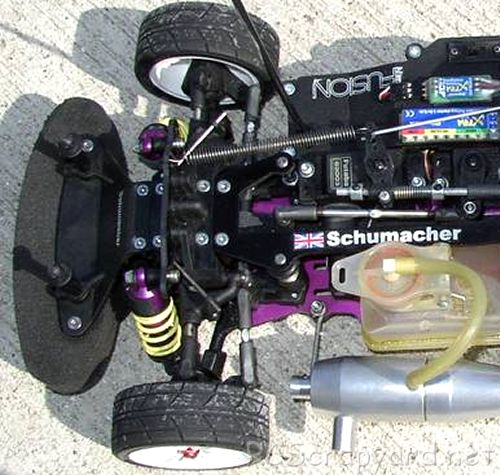

|
|
|


|
|
1/10 Scale Nitro Rally/Touring Car:
Schumacher Fusion R12 - K037 / K042 - Radio Controlled ModelHistory and Info:
Based on the successful electric SST Mission, the 4WD Fusion R12 was released by Schumacher in 2003.
▼ Scroll Down for More Images ▼
|








|
|
|

★ Schumacher Fusion-R12 ★

★ Schumacher Fusion-R12 Chassis ★

|
Buying a Used Schumacher Fusion R12
|
|
Manufacturers and Brands Catalogued, Listed and Reviewed by RC-Scrapyard.
At present, the RC Model Manufacturers, Brands and Distributors covered by us are: ABC Hobby, Academy, Acme Racing, Agama Racing, Amewi, Ansmann Racing, ARRMA, Team Associated, Atomic RC, Axial, AYK, Bolink, BSD Racing, Capricorn, Carisma, Carson, Caster Racing, Cen, Corally, Custom Works, Durango, Duratrax, ECX - Electrix, Exceed RC, FG Modellsport, FS-Racing, FTX, Fujimi, Gmade, GS-Racing, Harm, HBX, Helion, Heng Long, Himoto Racing, Hirobo, Hitari, Hobao, Hong-Nor, Hot Bodies, HPI, HSP, Intech, Integy, Jamara, JQ Products, Kawada, Kyosho, Losi, LRP, Maisto, Mardave, Marui, Maverick, MCD Racing, Megatech, Mugen, New Bright, Nichimo, Nikko, Nkok, Ofna, Pro-Pulse, Protech, PTI, RC4WD, Redcat Racing, RJ-Speed, Robitronic, Schumacher, Seben, Serpent, Smartech, Sportwerks, Step-Up, Tamiya, Team-C Racing, Team Magic, Thunder Tiger, Tomy, Top Racing, Traxxas, Trinity, Tyco, Vaterra RC, Venom, VRX Racing, WLToys, X-Factory, Xmods, Xpress, Xray, XTM, Yankee RC, Yokomo, ZD Racing and Zipzaps. |
|
Hints, Tips and Information
Tire Compounds
Way back in the early 1990s when I first got into RC, most of the off-road models available came with chunky hard compound block tires that gave little or no grip on grass or dirt tracks. On-road didn't have this problem as they were still using sponge tires that with a coating of wintergreen based tire additive before each race to improve grip. There was even one guy who swore, before every race, he dipped his wheels in a glass of light ale. |
|
Hints, Tips and Information
Damper Pistons
When you first build your RC model, you will sometimes find that there are a number of different pistons in the kit, with varying numbers of holes or hole sizes in them. Generally, the manufacturer will suggest one particular piston in the car manual, and may provide you with a mid range oil weight, but depending on the type of terrain you intend to race your model, their suggestion may not be the best for your needs. |
|
RC Models:
|
Radio & Motors: |
Other
Accessories: |